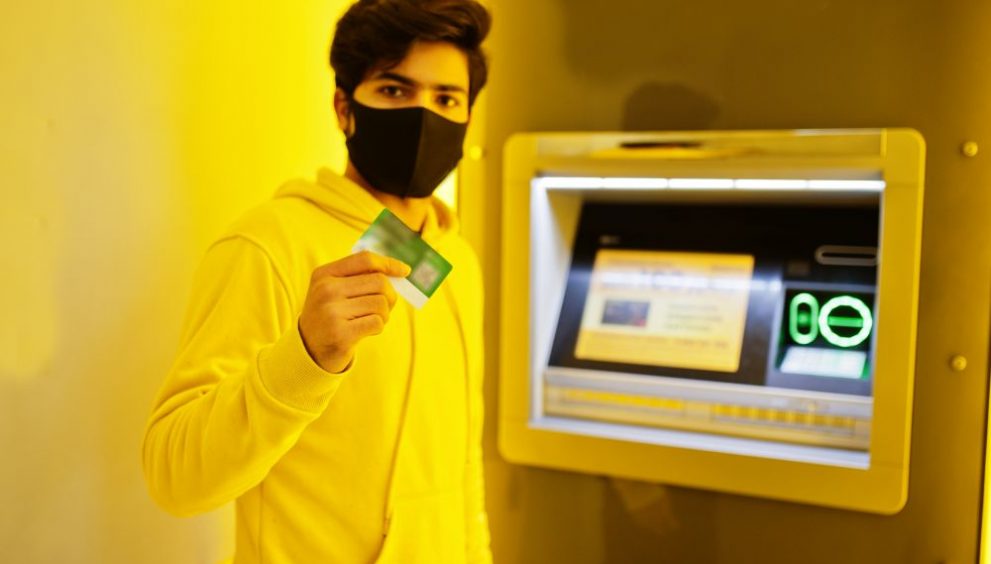ATM skimming is a growing threat to your financial security, with criminals using sophisticated devices to steal your card information and PIN at cash machines. This type of fraud can lead to unauthorized withdrawals, identity theft, and major financial losses if you’re not careful.
It’s crucial to understand how ATM skimming works, what signs to look out for, and steps you can take to protect yourself. By being aware and taking precautions when using ATMs, you can significantly reduce your risk of falling victim to this insidious crime.
What is ATM Skimming?
ATM skimming is a type of financial fraud where thieves install hidden electronic devices on ATMs to secretly capture your card data and PIN. The stolen information is then used to create fake cards and withdraw money from your account without your knowledge.
The skimming devices are cleverly disguised to blend in with the ATM, making them hard to spot. Criminals often work in teams, with one person installing the skimming device while another acts as a lookout. The whole process can take just a few seconds, after which the thieves leave with your sensitive financial information.
How Skimming Devices Work
Skimming devices are designed to be as discreet as possible to avoid detection. There are two main components:
- Card reader overlay: This fits over the ATM’s real card slot and captures the data from your card’s magnetic strip when you insert it.
- Hidden camera or fake keypad: To get your PIN, thieves use a small camera hidden in a brochure holder or light fixture to record you entering it. Alternatively, they may place a fake keypad over the real one to capture your keystrokes.
The devices are usually attached with double-sided tape or adhesive, allowing criminals to quickly install and remove them. Bluetooth technology may also be used to wirelessly transmit the stolen data to a nearby receiver.
Common Types of Skimming Devices
Skimming devices come in various forms, but some of the most common ones include:
Card Skimming Device
A card skimming device fits over an ATM’s card reader slot and looks like a legitimate part of the machine. When you insert your card, the device captures the data stored on the magnetic strip before it passes through to the real reader.
ATM Card Cloning Devices
ATM card cloning devices are used to create a duplicate copy of your card. After capturing your card information with a skimmer, thieves use this device to encode that data onto a blank card, often a gift card with a magnetic strip. The cloned card is then used to make fraudulent purchases or withdrawals.
ATM Card Reader Skimmer
An ATM card reader skimmer is a type of card skimming device specifically made for ATMs. It’s molded and colored to match a particular ATM model’s card reader slot. When installed, it’s very difficult to tell apart from the real slot.
The Dangers of ATM Skimming
ATM skimming fraud can have serious financial consequences. Once thieves have captured your card data and PIN, they can rack up fraudulent charges, drain your checking account, or even open new accounts in your name.
Some of the potential dangers include:
Credit Card Fraud Skimming
Credit card fraud skimming occurs when a skimming device is used to steal your credit card information. Thieves then use the data to make unauthorized purchases online or create counterfeit credit cards for in-person transactions.
Debit Card Cloning
With debit card cloning, criminals use an ATM skimmer to copy your card information and a hidden camera to record your PIN. They then create a duplicate debit card and use it to withdraw cash directly from your checking account.
Cash Machine Card Cloning
Cash machine card cloning is similar to debit card cloning but specifically targets ATMs. Thieves install a skimmer on the ATM to capture your card data and a camera to steal your PIN. A cloned card is then used to withdraw money from your account via any ATM.
The financial losses from skimming in banking can be substantial. Plus, sorting out the fraudulent activity with your bank and getting your money back can be stressful and time-consuming. Some victims may even need to close accounts and open new ones, which is a major hassle.
How to Spot ATM Skimming Devices
One of the best ways to protect yourself is to know what to look for when using an ATM. Here are some red flags that could indicate the presence of a skimming device:
- Card reader looks crooked, loose, or different in color/material from the rest of the ATM
- Keypad feels thicker or harder to press than usual
- Suspicious holes or tiny cameras above the keypad or screen
- Sticky residue or tape near the card reader slot
- Resistance or difficulty when inserting your card
If you notice anything odd about an ATM, don’t use it. Trust your instincts and find another machine. It’s always better to be safe than sorry.
Steps to Protect Yourself from ATM Skimming
In addition to being vigilant about spotting skimming devices, there are other precautions you can take to reduce your risk of fraud skimming:
- Use ATMs in well-lit, high-traffic areas: Avoid standalone ATMs in isolated locations, as these are easier targets for criminals.
- Cover the keypad when entering your PIN: Use your hand or an object to block potential hidden cameras from capturing your PIN.
- Inspect the ATM before using: Look for any signs of tampering, especially around the card reader slot and keypad. If something seems off, don’t use the machine.
- Monitor your accounts regularly: Keep a close eye on your bank and credit card statements for any suspicious activity. Enable alerts for transactions over a certain amount.
- Use your card as credit when possible: Credit cards generally offer better fraud protection than debit cards. Plus, a credit transaction doesn’t require you to enter your PIN.
What to Do if You Become a Victim of ATM Skimming
If you discover you’ve been a victim of card skimming fraud, act quickly to minimize the damage:
- Contact your bank or card issuer immediately to report the fraud and cancel your card.
- Review your account statements closely and report any unauthorized transactions.
- Place a fraud alert on your credit report to prevent thieves from opening new accounts in your name.
- File a police report, especially if money was stolen. Your bank may require this for their investigation.
- Consider signing up for identity theft monitoring to keep an eye out for any suspicious activity across your financial accounts.
The key is to be proactive and address the issue as soon as you discover it. The quicker you act, the better your chances of recovering your money and preventing further fraud.
Protect Yourselves from Fraud with Quick Heal
ATM skimming is a serious threat to your financial security. By understanding how this type of fraud works, what signs to look for, and steps you can take to protect yourself, you can significantly reduce your risk of becoming a victim.
Remember to always be vigilant when using ATMs. Cover the keypad when entering your PIN, look out for any signs of tampering, and trust your instincts if something seems off. Regularly monitoring your financial statements for suspicious activity is also crucial.
If you do fall victim to ATM skimming fraud, quick action is key. Contact your bank right away, review your statements, and place a fraud alert on your credit report. Consider using cybersecurity solutions like Quick Heal Total Security for added protection against online financial threats. By staying informed and taking precautions, you can help safeguard your hard-earned money from the clutches of ATM skimmers.
Check Out Our Full Antivirus Range


